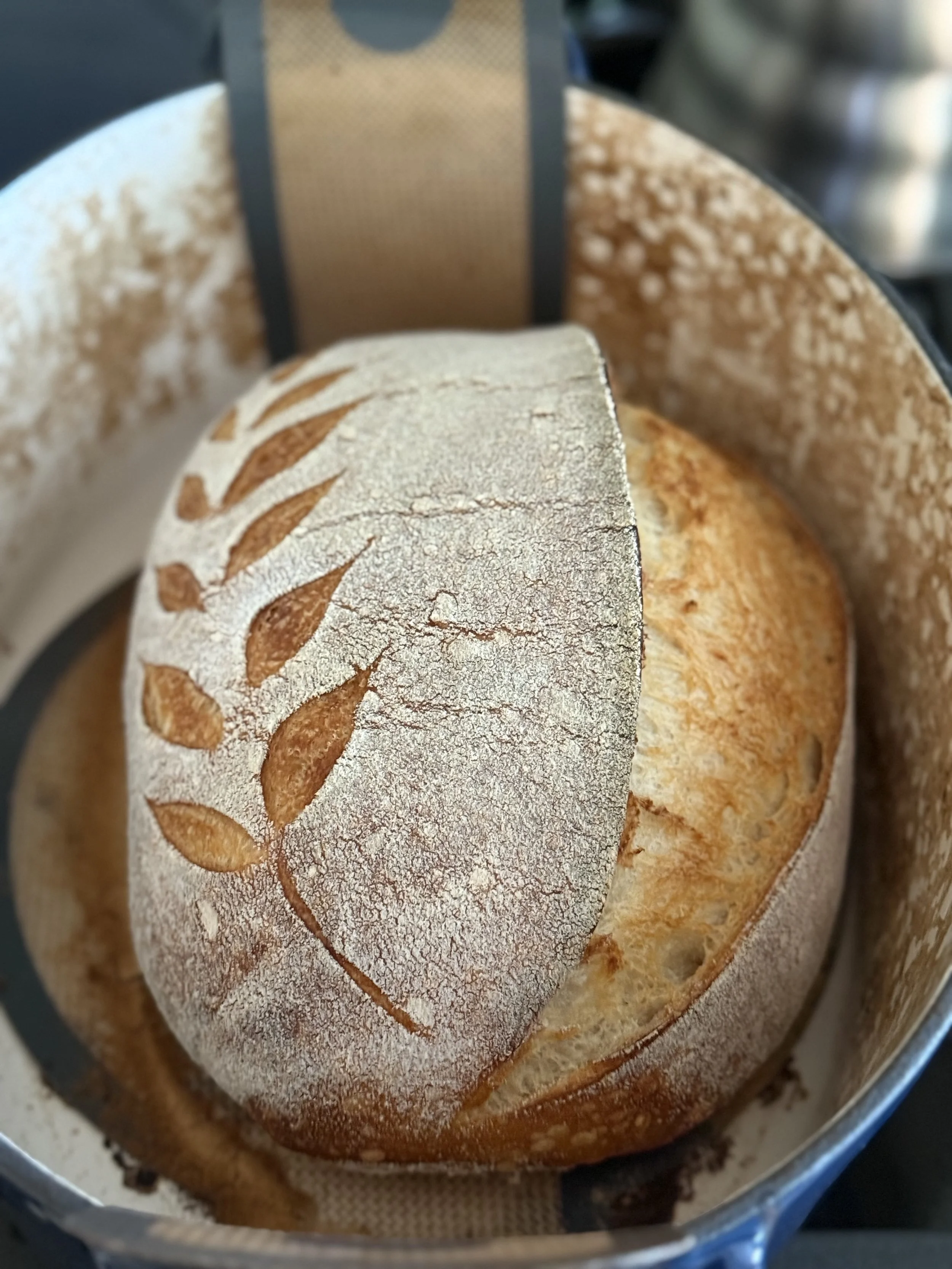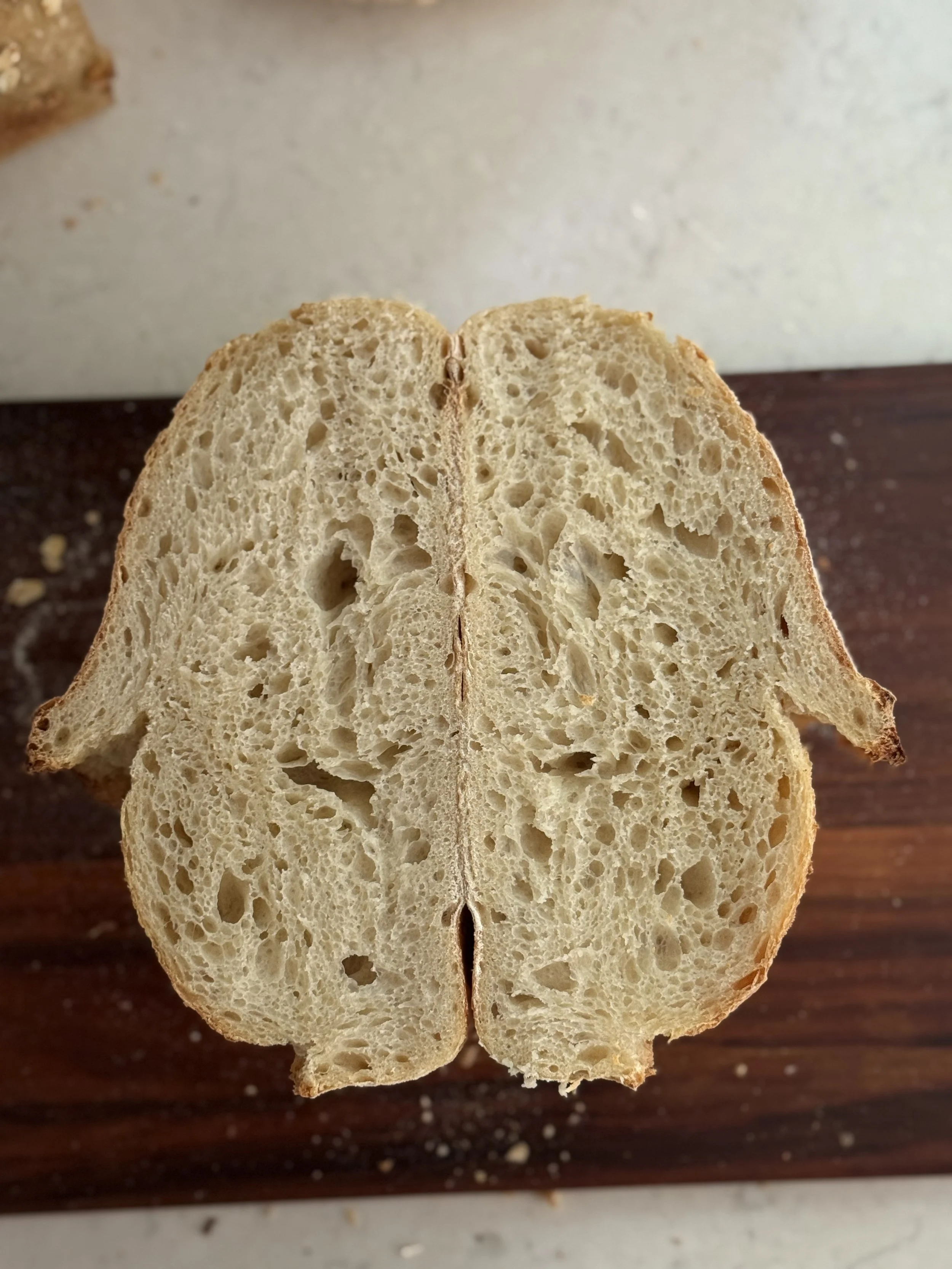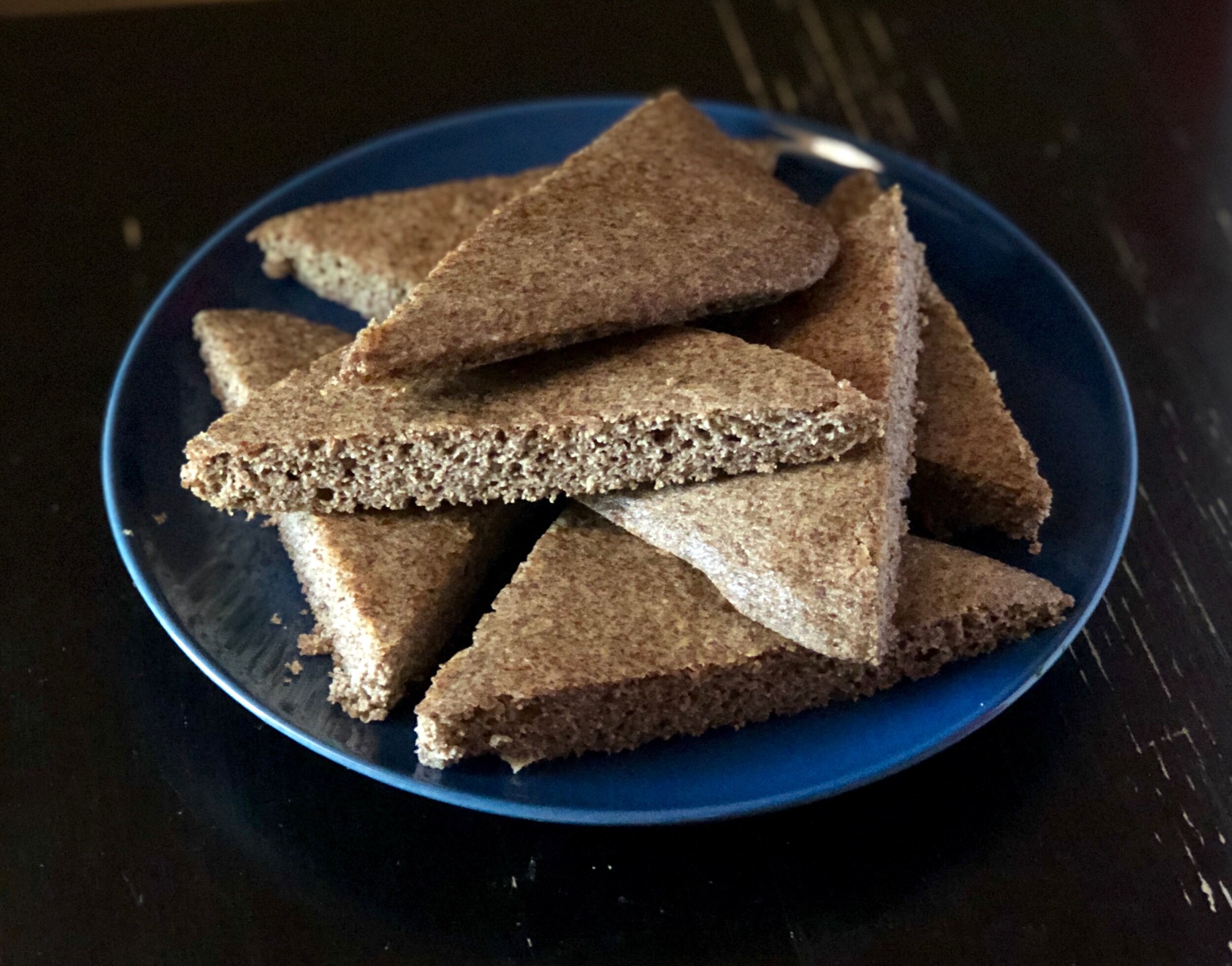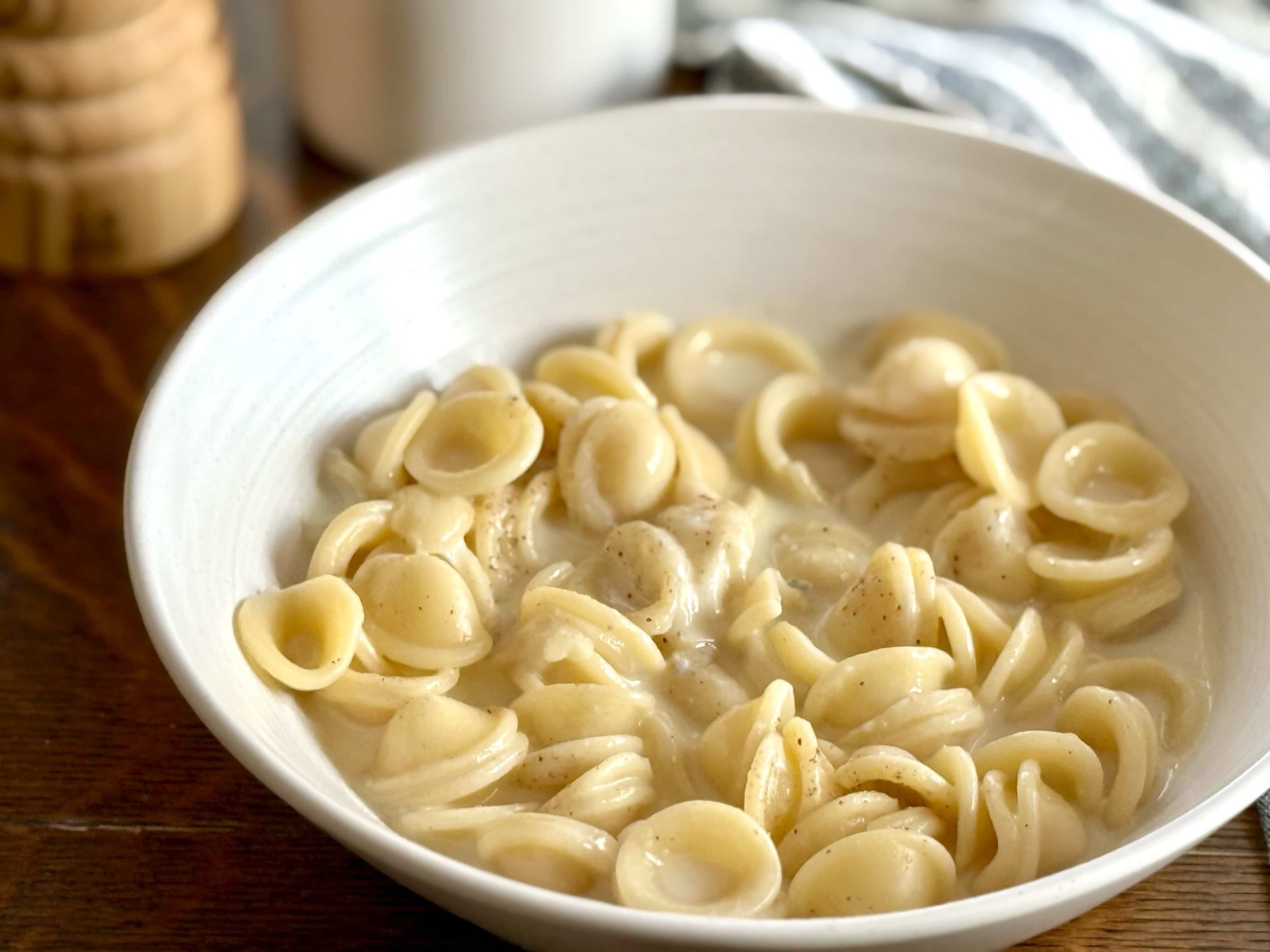What Temperature Should I Bake Sourdough at?
/3 loaves from the same batch of dough, baked at 3 different temperatures (loaves 1, 3, 4 from experiment 2)
What is the best temperature to bake sourdough bread at?
Like anything sourdough, there is no hard and fast answer to this. If sourdough were more straightforward, it would be way easier, and I wouldn’t be writing this post.
Loaf 3 from experiment 2
The most popular temperatures are 450°F (232°C), 475° (246°C), and 500°F (260°). If you read enough sourdough cookbooks, sourdough blogs, and sourdough groups, you’ll see these temperatures mentioned the most. Some preheat to and bake at the same temperature (i.e. preheat 450°F, bake 450°), others preheat hotter, then drop the temperature when loading the dough (i.e. preheat 500°F, bake 450°F).
Each of these temperatures are viable. Each oven bakes just a little different, and you’ll find the best temperature that works for you and your dough.
Pros and Cons of Baking at Lower Temperatures of 400°F - 450°F (205°C - 232°C)
Pro: Quicker time to preheat oven
Pro: Less likely to burn, especially the bottom
Pro: Stays within “safe” temperature ranges for more dutch ovens, parchment paper, and bread slings
Con: Oven spring is a bit slower, and loaves have a bit more time to spread after being scored before they start springing up
Con: Longer bake times
Pros and Cons of Baking at Higher Temperatures of 475°F - 550°F (246°C - 288°C)
Pro: Can get better oven spring
Pro: Quicker bake times
Pro: Can keep oven clean, since the higher temps are close to the “cleaning” function on many ovens
Con: More likely to get too dark or burn, especially the bottom
Con: Crust can set too quickly which can stunt rise or cause unwanted splits
Con: Longer oven preheating times
Baking Temperature Visuals
Here are a couple of visuals for you, from two different experiments using different temperatures. Keep in mind these are from from perfectly controlled experiments, but the results can still be informative, nonetheless!
The specs:
For each side by side bake-off, the loaves came from the same batch of dough. This means for each of the experiments, the bulk fermentation time, temperature, etc. were all identical. The two different experiments were done on different days, so the two batches of dough are obviously not identical, but that’s part of the point of repeating experiments. There are so many factors, you don’t want to definitively say certain results are 100% due to the different temperatures.
All loaves seen are made with 100% Kirkland organic all-purpose flour.
All loaves are approximately 72% hydration.
All loaves use 20% starter and 1.8% salt
All loaves were baked fairly shortly after ovens were fully preheated, but not 30-60 minutes as some recommend. With the exception, of course, of the cold-bake loaf.
Experiment 1
Loaf 1 was baked at 500°F (260°C) - it got the deepest color, the quickest. The bottom got very dark. It got a nice spring, and didn’t actually seem overly stunted compared to other loaves I’ve baked at 500°F or similarly high temperatures.
Loaf 2 was baked in an oven that was preheated to 500°F (260°C), then reduced to 450°F (232°C) when bread was loaded into the oven - another nice loaf, nice spring, nice color. Overall this seemed to be a good baking combo.
Loaf 3 was baked at 450°F (232°C) - yet another nice loaf. A bit lighter color, as would be expected at a more moderate temperature.
Loaf 1
Crumb shot of Loaf 1
Loaf 2
Crumbshot of Loaf 2
loaf 3 - don’t ask what this scoring is supposed to be…ok fine, it was supposed to be a lilac but looks more like, er, purple corn cobs hahaha
Crumbshot of Loaf 3
Overall all three loaves are nice, if not perfect. It would have been helpful if I had scored them all the same, but at the last minute I got too excited with these blank slates in front of me, just asking for some fun scoring. This was silly of me since the whole reason for these 3 loaves was to bake off for this temperature experiment. Ah well. I came away thinking preheating hotter and dropping the temp or simply baking at 450°F would be the way to go. The hottest bake produced a nice loaf but there’s no coming back from a burnt bottom, despite counter measures taken (tinfoil inside of dutch oven, cookie sheet beneath dutch oven).
Experiment 2
Loaf 1 was loaded into a cold dutch oven, and placed in a cold oven to preheat oven to 450°F - still achieved an ear but this loaf was a bit flatter, most likely due to being over-proofed, but I don’t think the cold dutch oven did over-proofed dough any favors.
Loaf 2 was baked at 450°F (232°C) - this loaf turned out nicer than the first, and looked most like loaf 4. I do not have pictures since it was packaged up and given to a friend.
Loaf 3 was baked in an oven that was preheated to 500°F (260°C), then reduced to 450°F (232°C) when bread was loaded into the oven - this was the nicest loaf of the batch, with a good spring and nice belly. Perhaps the hot oven helped the over-proofed dough spring up, giving it just the boost it needed.
Loaf 4 was baked in an oven that was preheated to 475°F (246°C), then reduced to 450°F (232°C) when bread was loaded into the oven - this loaf turned out fairly similarly to the first loaf baked in a cold dutch oven. It didn’t spread quite as much, and got a touch more spring, however, the first loaf had a slightly better crumb in my opinion.
loaf 1
crumbshot Loaf 1
loaf 4
Crumbshot Loaf 4
While I did score these all with the same principal score, this dough was a bit over-proofed and not as nice as the other experiment. I’ve seen controversial reviews to baking in a cold dutch oven/starting with a cold oven, but even here, I’ve noticed something continuing to ring true. If you have a healthy starter, and bulk proofing isn’t too far over or under, you will still get decent results, no matter what tweaks you get. Some people chase after all the little tricks and gimicks in an effort to better their loaf, when in reality, these tricks may help, but it will always come back to the basics. Work on bulk ferment, make sure your starter is healthy and happy. Oven temperatures, the 5m score, freezing a loaf before baking, etc. can be helpful, but shouldn’t be pursued at the cost of continuing to study bulk ferment and finding a starter feeding routine that works for you.
Here’s What I Find Works, and Maybe You Will Too
I find comfortable, consistent results with preheating and baking at 450°F (232°C).
More recently, I’ve been playing around more with preheating to 475°F or 500°F then dropping to 450°F when loading the loaves, with good results. It seems to really help that initial oven spring, especially when dough likes to verge on over-proofed in a warm 80-82°F (27°-28°C) kitchen in the summer. When I’m baking off multiple loaves for my microbakery, my current favorite method is preheating to 475°F, then dropping to 450° as soon as the first loaves hit the oven.
What about preheating for 30 minutes or an hour, as some instruct? I don’t do that. When I first started I tried the 30 minute method…but honestly, I just don’t want my oven on for that much extra time, especially in the summer. My oven is on for long enough as it is. Maybe it does help a bit, I don’t know, I’ve never tried loaves side by side like that, but for me in this moment, it’s just not worth it.



































































































































